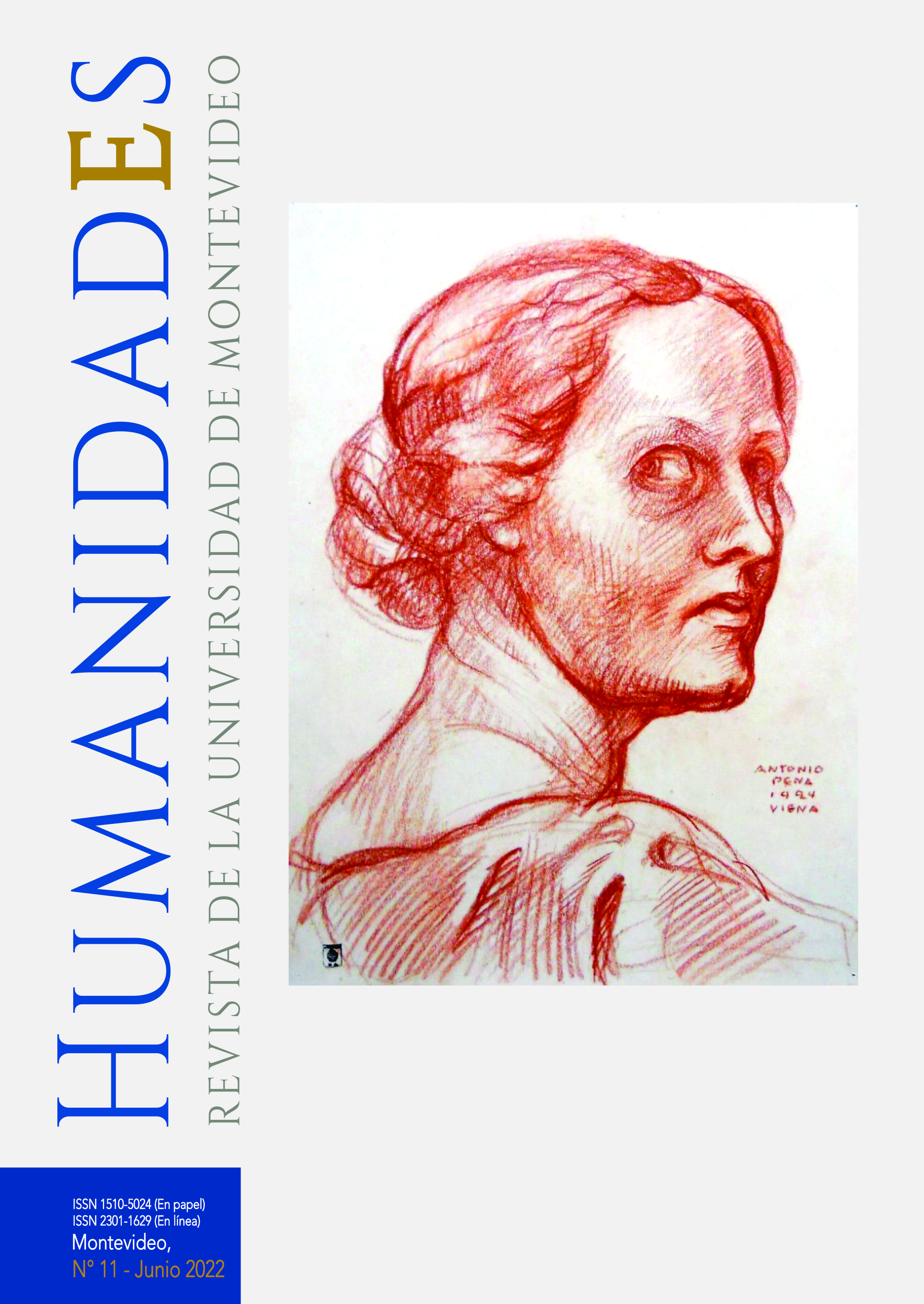Filosofía, belleza funcional y sentir cotidiano en el arte conmemorativo
DOI:
https://doi.org/10.25185/11.2Palabras clave:
Arte conmemorativo, Belleza funcional, Belleza interna, DantoResumen
Se denuncia que la filosofía del arte no ha atendido suficientemente ni a la funcionalidad que define a muchas obras, y a géneros como el arte conmemorativo, ni a las emociones que generan: un sentir cotidiano considerado inapropiado como respuesta al arte. Se argumenta que el concepto filosófico (autónomo) de arte lo impide. El reciente debate sobre la necesidad de apreciar una «belleza funcional» insiste en ello. Sin embargo, los análisis de Arthur Danto sobre el arte conmemorativo permiten conciliar un concepto filosófico de arte con su posible funcionalidad y con la afectividad que despierta en la gente corriente.
Descargas
Citas
Alcaraz, M.ª José, y Francisca Pérez Carreño. “Teoría del arte”. En Enciclopedia de la Sociedad Española de Filosofía Analítica, 2018. http://www.sefaweb.es/teoria-del-arte/
Castro, Sixto. En teoría es arte: una introducción a la estética. Salamanca: San Esteban, 2005.
Costello, Diarmuid. “Kant and Danto, Together at Last?”. En New Waves in Aesthetics, editado por Kathleen Stock y Katherine Thomson-Jones, 244-266. Basingstoke, Hampshire: Palgrave Macmillan, 2008.
Danto, Arthur C. “The Artworld”. The Journal of Philosophy 61, nº 19 (1964): 571-584. https://doi.org/10.2307/2022937
Danto, Arthur C. The Transfiguration of the Common Place: A Philosophy of Art. Cambridge: Harvard University Press, 1981.
Danto, Arthur C. The State of the Art. New York: Prentice Hall, 1987.
Danto, Arthur C. “Beauty instead of ashes”. En Regarding Beauty: A View of the Late Twentieth Century, editado por Neal O. Benezra y Olga M. Viso, 183-197. Horshhom lnstitution: Haus der Kunst, 1999.
Danto, Arthur C. Beyond the Brillo Box: the visual arts in post-historical perspective. New York: The Noonday Press, 1992.
Danto, Arthur C. The Abuse of Beauty: Aesthetics and the Concept of Art. Chicago y LaSalle: Open Court, 2003.
Danto, Arthur C. “Kalliphobia in Contemporary Art”. Art Journal 63, nº 2 (2004): 24-35. https://doi.org/10.1080/00043249.2004.10791123
Danto, Arthur C. “Embodied Meanings, Isotypes, and Aesthetical Ideas”. The Journal of Aesthetics and Art Criticism 65, nº 1 (2007): 121-129. https://doi.org/10.1111/j.1540-594X.2007.00243.x
Davies, Stephen. The Definitions of Art. Ithaca. New York: Cornell University Press, 1991.
Davies, Stephen. “Aesthetic Judgements, Artworks and Functional Beauty”. Philosophical Quarterly 56, nº 223 (2006): 224–41. https://doi.org/10.1111/j.1467-9213.2006.00439.x
Dickie, George. Art and the Aesthetic: An Institutional Analysis. Ithaca, NY: Cornell University Press, 1974.
Kant, Inmanuel. Crítica del Juicio. Traducido por Manuel García Morente. Madrid: Espasa Calpe, 1981.
Korsmeyer, Carolyn. Things. In Touch with the past. New York: Oxford University Press, 2019.
Gilmore, Jonathan. “A functional view of artistic evaluation”. Philosophical Studies 155, nº 2 (2011): 289-305. https://doi.org/10.1007/s11098-010-9570-8.
Parsons, Glen, y Allen Carlson. Functional beauty. Oxford: Clarendon Press, 2008.
Rubio Marco, Salvador. “Teoría(s) del arte”. En Estética, editado por Francisca Pérez Carreño, 53-91. Madrid: Tecnos, 2013.
Shiner, Larry. La invención del arte: una historia cultural. Traducido por Eduardo Hyde y Elisenda Juliber. Barcelona: Paidós, 2004.
Wolterstorff, Nicholas. “Why Philosophy of Art Cannot Handle Kissing, Touching, and Crying”. Journal of Aesthetics and Art Criticism 61, nº 1 (2003): 17–27. https://doi.org/10.1111/1540-6245.00088
Publicado
Cómo citar
Número
Sección
Licencia
Derechos de autor 2022 Matilde Carrasco Barranco

Esta obra está bajo una licencia internacional Creative Commons Atribución 4.0.




























 Esta obra está bajo una licencia de
Esta obra está bajo una licencia de 